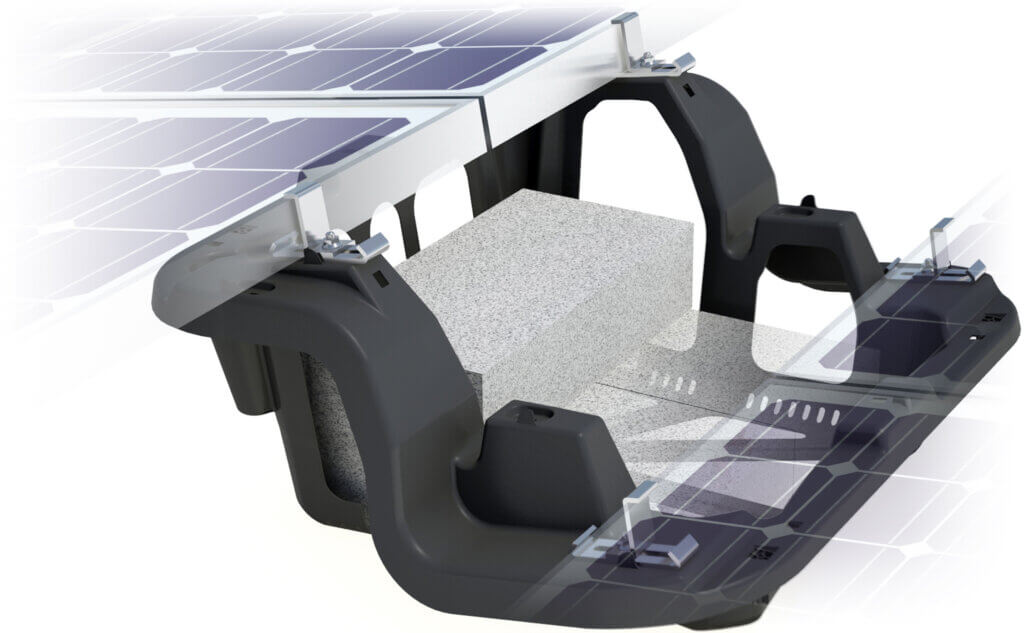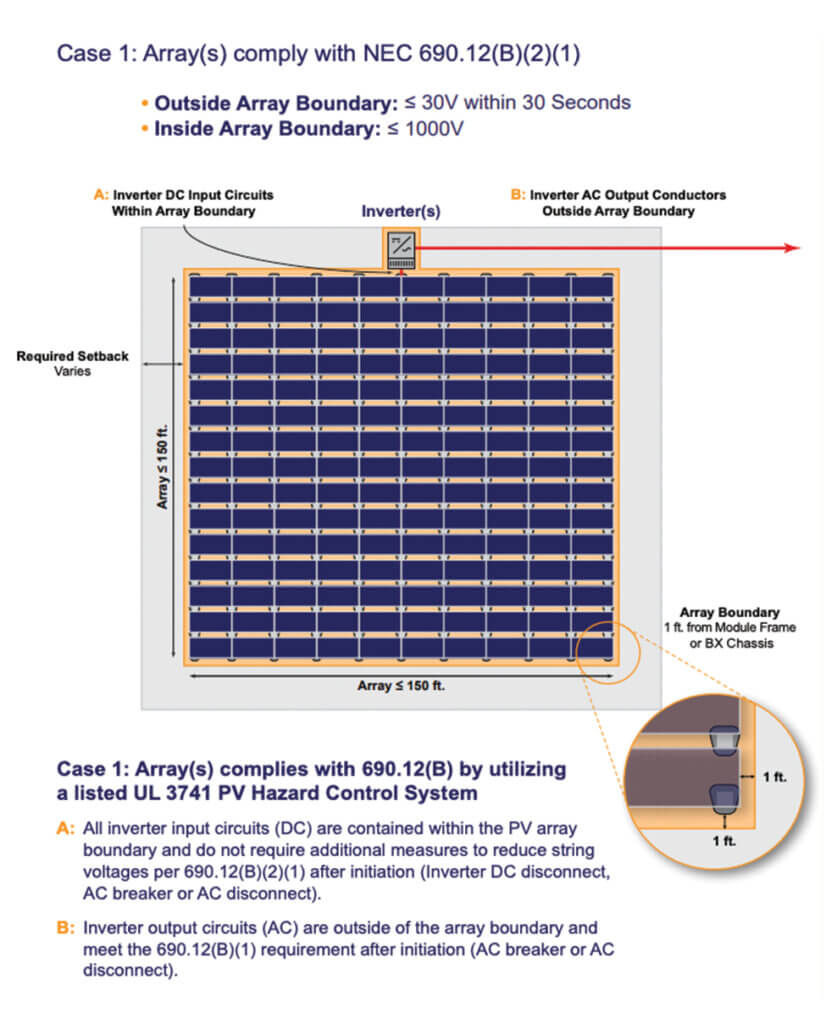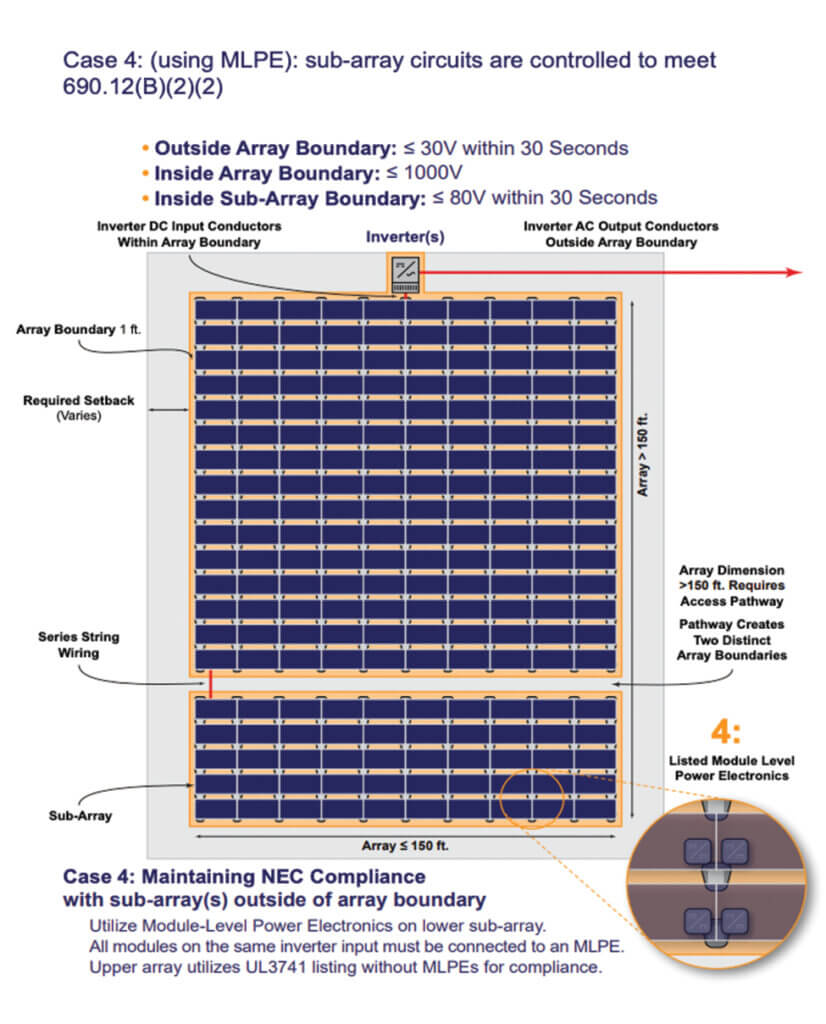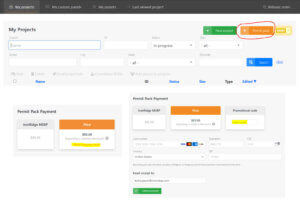BX BALLASTED SYSTEMS LISTED TO UL 3741
INSTALL BX WITHOUT MLPE DEVICES
PV Hazard Prevention on Buildings
A new safety standard, UL 3741, was published in late 2020. It is now referenced in the 2020 National Electric Code (NEC) 690.12 B (2) as another option to comply with rapid shutdown requirements inside the array boundary. IronRidge’s BX UL 3741, Photovoltatic Hazard Control System (PVHCS) listing, allows systems to be designed up to 1000V without the need for module-level power electronics (MLPE).
Cost Savings on BX Projects
The BX Ballasted System is listed to UL 3741 and approved with select string inverters that incorporate safety requirements for rapid shutdown. Without the need for MLPE, system costs can be dramatically reduced, saving on materials, installation time, and future O&M costs, all while ensuring firefighter safety—as verified by the certification requirements of the UL 3741 standard.
BX Systems can now use a 1000-volt string inverter, saving several cents per watt and cutting the number of cable connectors in half. And less connections mean less points of failure. As an added benefit, the BX Chassis are polymer-based—so having less exposed metal edges will reduce the risk of wire damage that could cause a ground fault.

UL Listings for Safer Solar
The Underwriter’s Laboratories (UL) is a standards development organization responsible for developing and writing the safety standards for the US. Certification for BX and other IronRidge systems are tested and listed to UL standards by Intertek, a nationally-recognized testing laboratory. For more information on how installers can design projects to comply with this new safety standard, UL 3741, review the uses cases and addendum that are referred to below.
Rapid Shutdown of PV on Buildings
In the 2020 National Electric Code (NEC), “Rapid Shutdown” inside the array boundary has been updated to include “PV Hazard Control Systems (PVHCS)” as a way to comply with Rapid Shutdown.
NEC 690.12 requires that all PV arrays installed on or in buildings shall include rapid shutdown functions to reduce shock hazard for Fire Fighters (FF) in accordance with 690.12(A) through (D):
(A) Controlled Conductors
(1) PV system DC circuits
(2) Inverter output circuits originating from inverters located within array boundary
(B) Controlled Limits
(1) Outside Array Boundary: ≤30V within 30 seconds
(2) Inside Array Boundary:
(1) Listed PV Hazard Control System (UL 3741)
(2) ≤80V within 30 seconds after rapid shutdown initiation
(3) PV array without exposed wiring methods or conductive parts
(C) Initiation devices
• Initiation device(s) shall initiate the rapid shutdown function of the PV system
(D) Equipment
• Equipment that performs rapid shutdown functions other than initiation devices, such as listed disconnect switches, circuit breakers, or control switches.
The simplest installation method to comply with NEC690.12 (B) is to utilize the BX UL 3741 system with a contiguous array (no separate sub-arrays) with one or more collocated inverters, as all inverter DC input circuits are within the 1ft array boundary (Case 1). Installations where sub-arrays are required and cannot be included within the 1ft array boundary can comply by alternative options (Case 4).


BX Installation Addendum for UL 3741
The BX Photovoltaic Hazard Control System (PVHCS) is a UL 3741 Listed system that complies with NEC 690.12(B)(2)(1), when installed by qualified installers per the installation procedures outlined in the BX System Installation Manual and the BX System UL 3741 Installation Addendum. Please refer to subsequent sections of the addendum for various examples of system designs that comply with 690.12(B)(2).

